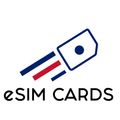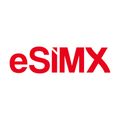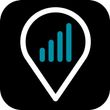eSIM CardsはPentagram Systemsのブランドで、イギリスとヨーロッパでのモバイル通信を革新することに尽力しています。eSIM技術のリーディングプロバイダーとして、現代の旅行者、ビジネスプロフェッショナル、テクノロジー愛好家のニーズに合わせたシームレスで革新的なソリューションを提供します。私たちの使命はイギリスやヨーロッパのどこにいても、手間のかからない即時通信をお届けすることです。

eSIM CardsはPentagram Systemsのブランドで、イギリスとヨーロッパでのモバイル通信を革新することに尽力しています。eSIM技術のリーディングプロバイダーとして、現代の旅行者、ビジネスプロフェッショナル、テクノロジー愛好家のニーズに合わせたシームレスで革新的なソリューションを提供します。私たちの使命はイギリスやヨーロッパのどこにいても、手間のかからない即時通信をお届けすることです。
キプロス向けeSIM Cards eSIMデータプラン
よくある質問
eSIM Cardsはキプロス向けに無制限データeSIMを提供していますか?
eSIM Cardsはキプロス向けに無制限データプランを提供していません。定量データプランとして、30日間有効で100GBの「Cyprus Premium 100GB」や、同じく30日間有効で400GBの「Europe 400GB」を用意しています。これらは5G・4Gネットワークで利用でき、キプロス国内および他国の利用も可能です。
非常に大量のデータ通信を行わない限り、これらの定量プランの方がコストパフォーマンスが高く、使い勝手も良いといえます。
eSIM Cardsはキプロス向けに電話番号やSMS付きeSIMプランを提供していますか?
eSIM Cardsではキプロス向けに電話番号やSMS機能付きのeSIMプランを提供していません。ご利用いただけるのはすべてデータ通信専用のプランのみです。
データ通信は5G・4G・3Gネットワークで利用でき、LINEやFacebook Messenger、iMessageなどのVoIPアプリを使えば音声通話やメッセージのやり取りが可能です。そのため、電話番号やSMSがなくても通信環境を十分に活用できます。
eSIM Cardsはキプロス向けにいくつのデータプランを提供していますか?
eSIM Cardsはキプロス向けに、国別プランが1つ、複数国プランが8つ、合計9種類のデータプランを提供しています。すべてのプランは定量データプランであり、データ定額は25 GBから400 GBの範囲で、価格はUSD 24.03からUSD 66.74まで、利用期間は5日から30日までです。
Summarized by Gen AI. Last updated:




